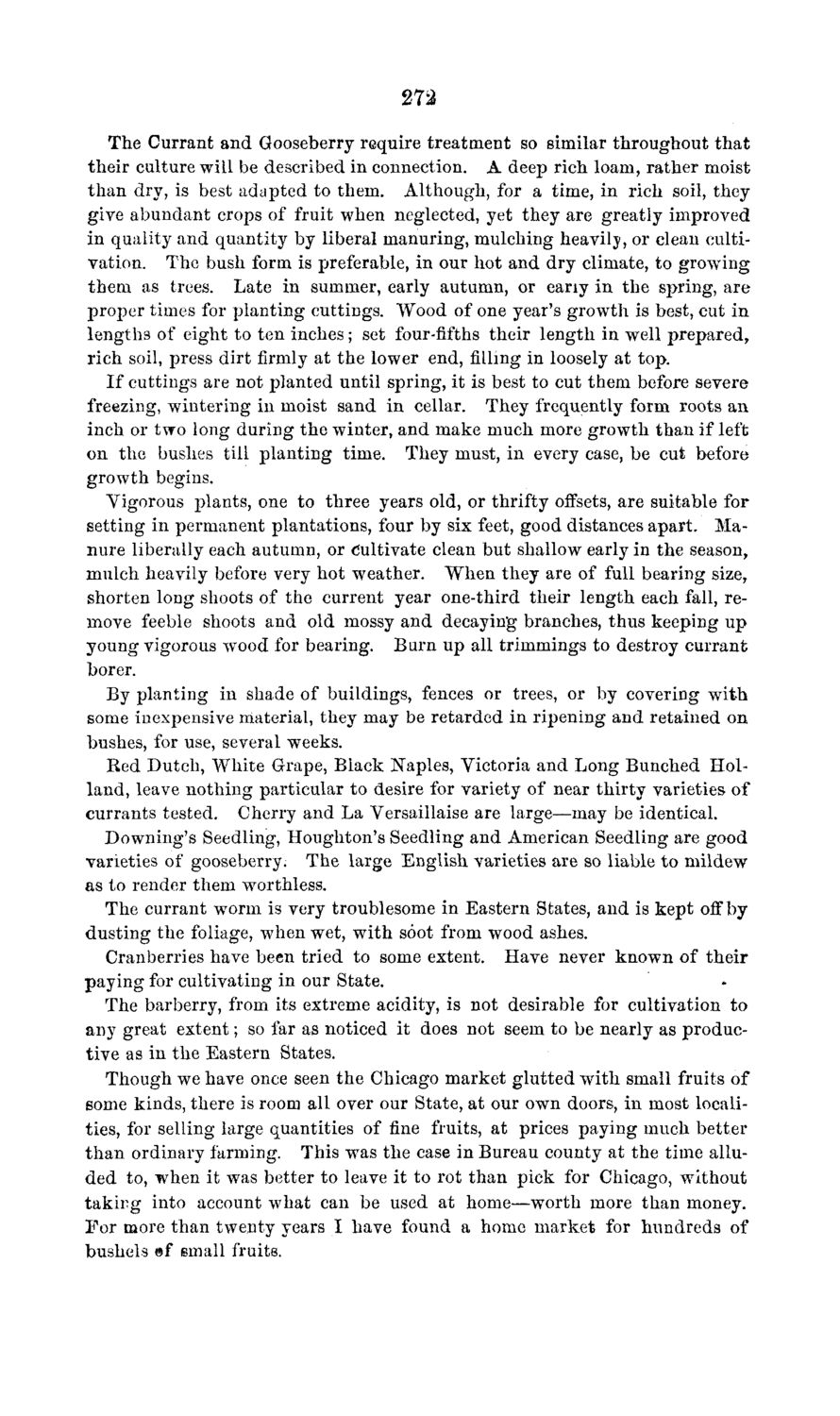| |
| |
Caption: Board of Trustees Minutes - 1869
This is a reduced-resolution page image for fast online browsing.

EXTRACTED TEXT FROM PAGE:
272 The Currant and Gooseberry require treatment so similar throughout t h a t their culture will be described in connection. A deep rich loam, rather moist than dry, is best adapted to them. Although, for a time, in rich soil, they give abundant crops of fruit when neglected, yet they are greatly improved in quality and quantity by liberal manuring, mulching heavily, or clean cultivation. The bush form is preferable, in our hot and dry climate, to growing them as trees. Late in summer, early autumn, or e a n y in the spring, are proper times for planting cuttings. Wood of one year's growth is best, cut in lengths of eight to ten inches; set four-fifths their length in well prepared, rich soil, press dirt firmly at the lower end, filling in loosely at top. If cuttings are not planted until spring, it is best to cut them before severe freezing, wintering in moist sand in cellar. They frequently form roots an inch or two long during the winter, and make much more growth than if left on the bushes till planting time. They must, in every case, be cut before growth begins. Vigorous plants, one to three years old, or thrifty offsets, are suitable for setting in permanent plantations, four by six feet, good distances apart. Manure liberally each autumn, or Cultivate clean but shallow early in the season, mulch heavily before very hot weather. When they are of full bearing size, shorten long shoots of the current year one-third their length each fall, remove feeble shoots and old mossy and decaying branches, thus keeping u p young vigorous wTood for bearing. Burn up all trimmings to destroy currant borer. By planting in shade of buildings, fences or trees, or by covering w i t h some inexpensive material, they may be retarded in ripening and retained on bushes, for use, several weeks. Red Dutch, White Grape, Black Naples, Victoria and Long Bunched Holland, leave nothing particular to desire for variety of near thirty varieties of currants tested. Cherry and La Versaillaise are large—may be identical. Downing's Seedling, Houghton's Seedling and American Seedling are good varieties of gooseberry. The large English varieties are so liable to mildew as to render them worthless. The currant worm is very troublesome in Eastern States, and is kept off by dusting the foliage, when wet, with soot from wood ashes. Cranberries have been tried to some extent. Have never known of their paying for cultivating in our State. The barberry, from its extreme acidity, is not desirable for cultivation to any great extent; so far as noticed it does not seem to be nearly as productive as in the Eastern States. Though we have once seen the Chicago market glutted w i t h small fruits of some kinds, there is room all over our State, at our own doors, in most localities, for selling large quantities of fine fruits, at prices paying much better t h a n ordinary farming. This was the case in Bureau county at the time alluded to, when it was better to leave it to rot than pick for Chicago, without t a k i n g into account what can be used at home—worth more than money. F o r more than twenty years I have found a home market for hundreds of bushels @f email fruits.
| |